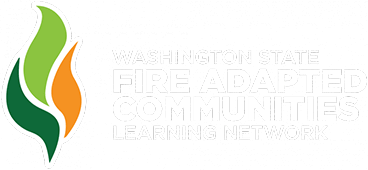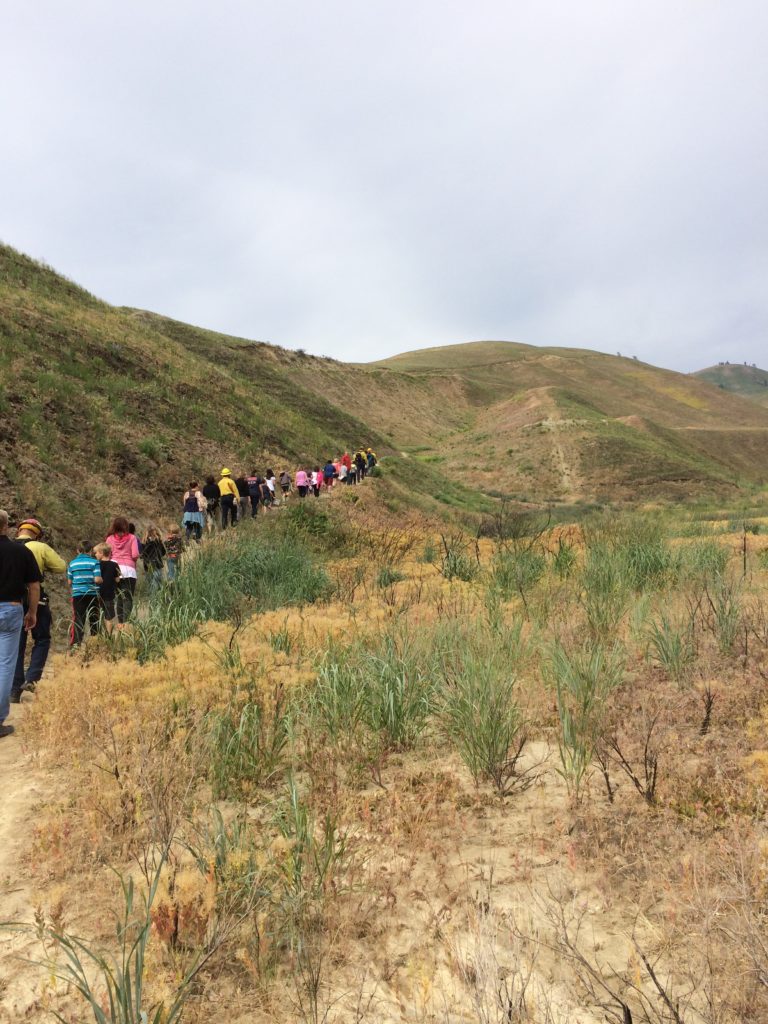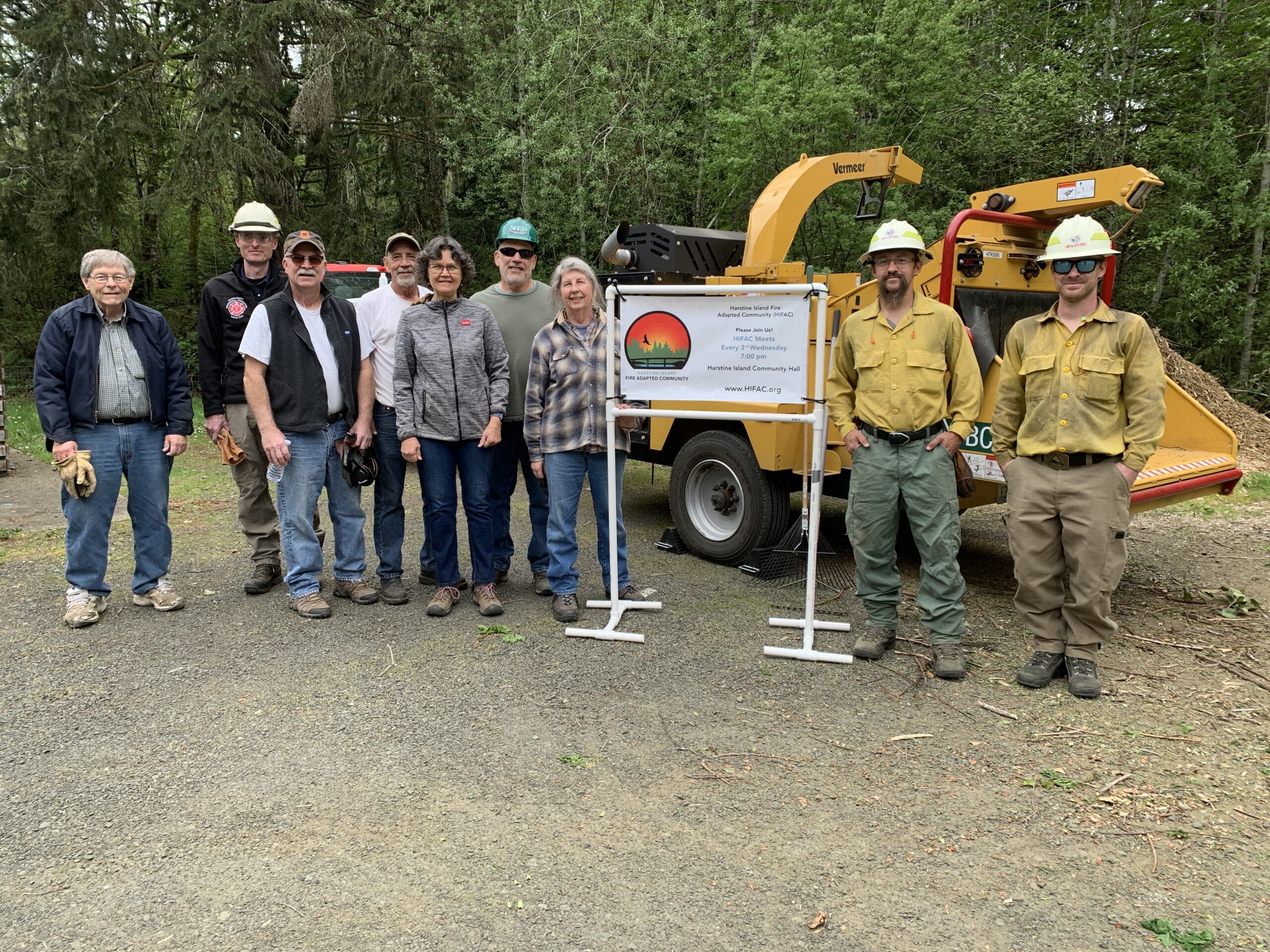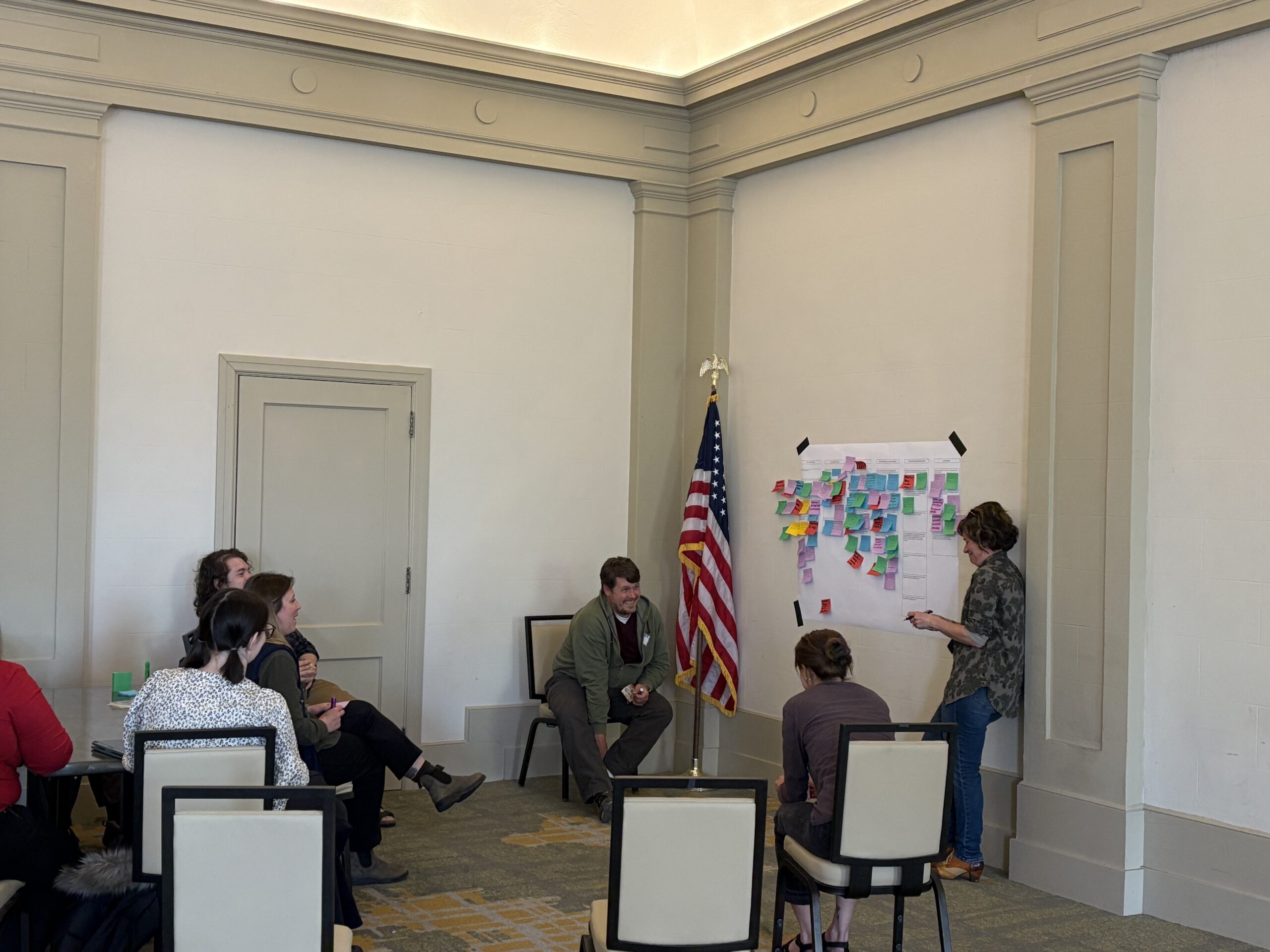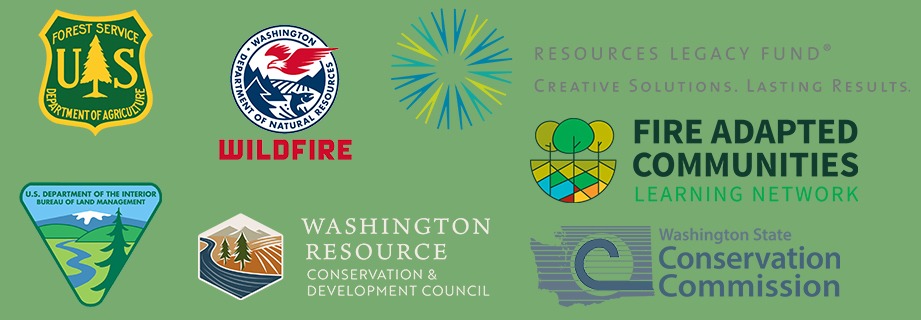Almost a year after the Sleepy Hollow fire, a bus dumped a whole heap of kids off at the bottom of a dusty trail. They ran into each other, yelled, ran into each other some more, picked up unidentifiable bones from the ditch, and well, acted like kids. It was a beautiful, albeit hot, central Washington day. We took a bunch of local third and fourth graders into the Wenatchee foothills, hiking (relatively) single file to a place where we could look down over the neighborhood that was impacted by the Sleepy Hollow fire in June 2015. In partnership with the local schools and community superhero Sara Rolfs, nearly 300 kids got the opportunity to experience this hike over the weeks to come. (The North Central Educational Service District Foundation provided funds to support the trips through a grant dedicated by the Chelan-Douglas Land Trust. The Wenatchee Art Education Consortium and Wenatchee Valley Museum and Cultural center were also involved in making these excursions a reality.)
We hiked through a post-fire recovery landscape, which also happens to be their backyard. We took them there because fire is something we talk about as adults, especially in central Washington, but beyond the “don’t play with matches” bit, kids don’t always have a great deal of direct experience with fire. The goal was to make the concepts behind Fire Adapted Communities relatable to kids who watched the fires approach, kids who had to evacuate, and even the ones who lost their homes.
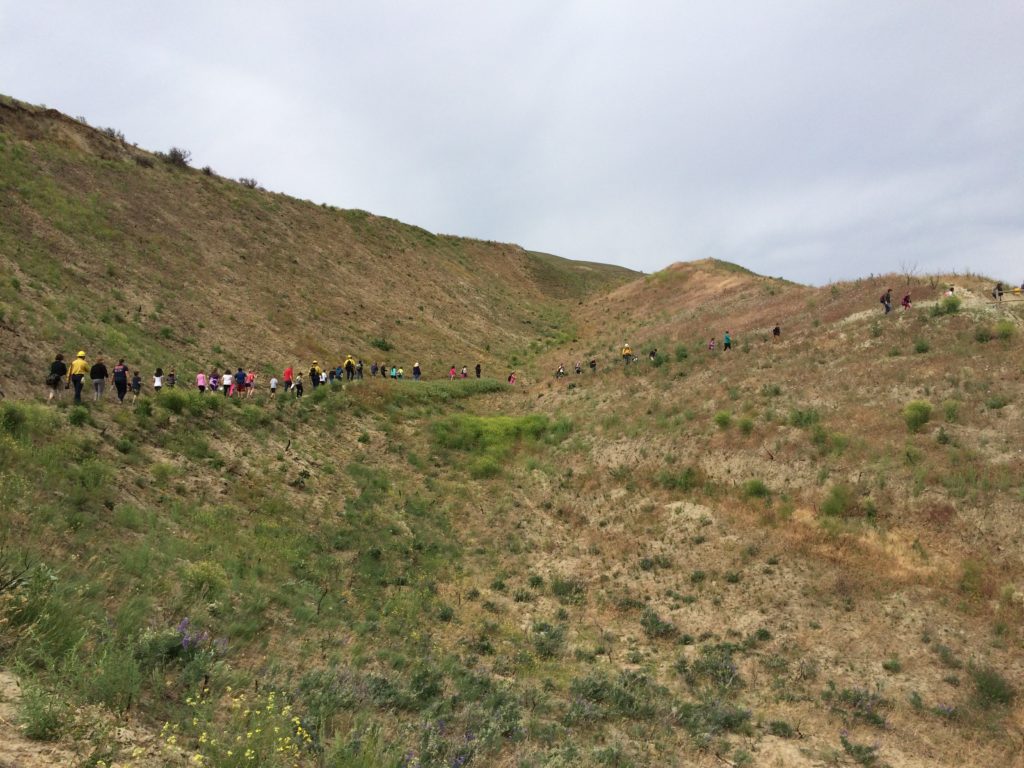
During the summer of 2015, one of the hardest wildfire seasons in Washington history, Wenatchee was filled with smoke and the flames were visible in the foothills and on the news. The kids talk about it as we hike across the landscape with firefighters from Chelan County Fire District 1, in full wildland gear. They listen as Chief Mike Burnett talks about how quickly wildfires move, how they consume different sizes of fuel, and the challenges associated with controlling a wildland fire where it interfaces with an urban landscape.
Bill Larson, former Community Wildfire Liaison for CCFD1, points down to a vacant lot where his home once stood. He believes strongly that when it comes to being a Fire Adapted Community, the best way to make progress is to involve and educate the next generation of decision makers, homeowners, firefighters, and business owners. “We can all acknowledge that children are the key to our future,” Larson explains, “They will become the leaders of our society and the stewards of our environment.” These third and fourth graders got to broaden their perspective and knowledge base regarding what was, for many of them, a very real and very personal experience. “Through education and involvement at an early age, our children will become attuned to these important issues which directly affect the quality of life for everyone,” Larson continues. “What better way to ensure a brighter future in public safety, than to invest in our children now?”
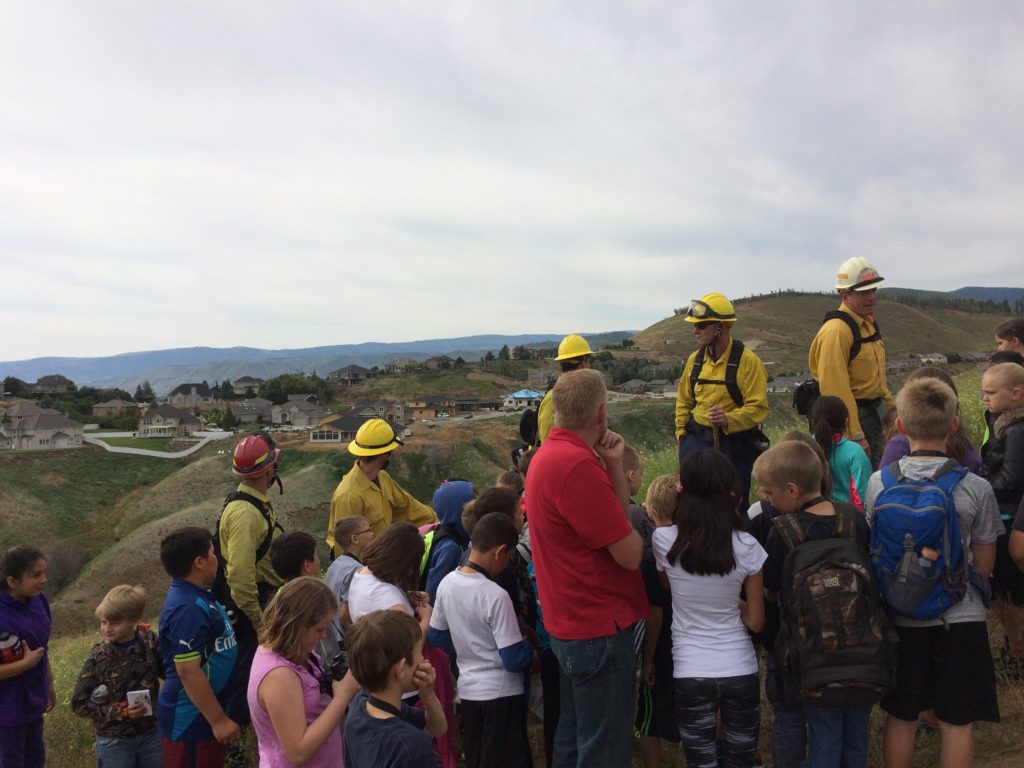
This outing wasn’t the only effort towards this goal. The Wenatchee community has come together on a number of occasions this year to explore wildfire with the area’s youth (check out some of the projects here, https://www.facebook.com/wildfireandus/). There were, and continue to be, many community-based efforts to engage students, giving them the opportunity to see wildfires’ role in the landscape, the community’s responsibility to be prepared, and the firefighters’ job to protect what they can.
We as a community have recognized that we need to learn to coexist with fire. But we need to make sure to include the next generation. This wasn’t a learning experience where the kids had to sit still and listen, knowing there would be a quiz later. In fact, watching the kids zig zag all over the place and (repeatedly) reminding them it is not polite to throw dirt in each other’s eyes, I thought, “Man alive, these kids need to get outside more.” These kids, high energy and slightly distracted as they were, were able to connect this landscape with their wildfire experiences the previous summer. They walked through the burn scar, looked down onto a neighborhood that was impacted, and heard real scenarios from the first responders. They walked through sagebrush that had been charred by the fire but was carrying on, fields of wildflowers taking over, and winded their way up the hills that serve as the backdrop to their childhoods. They got to look down over the vacant lots where homes once stood, as well as see the homes in the same neighborhood that were still standing.
As a member of the Washington Fire Adapted Communities Learning Network, Chelan County Fire District 1 has embraced the network’s goal for adaptation: Foster a strong and resilient Washington whose residents understand their role (and the role of fire) in a fire-adapted landscape. Bringing the community’s youth into the conversation helps ensure that understanding will span generations. In the Fire Adapted Communities world, we often speak of how fire adaptation is not an end state, but rather an ongoing process that hopefully improves and results in resilient communities over time. We’re expecting the next generation to take over adapting. Hopefully with an early start, they’ll be able to adapt even better than we have been able to.
